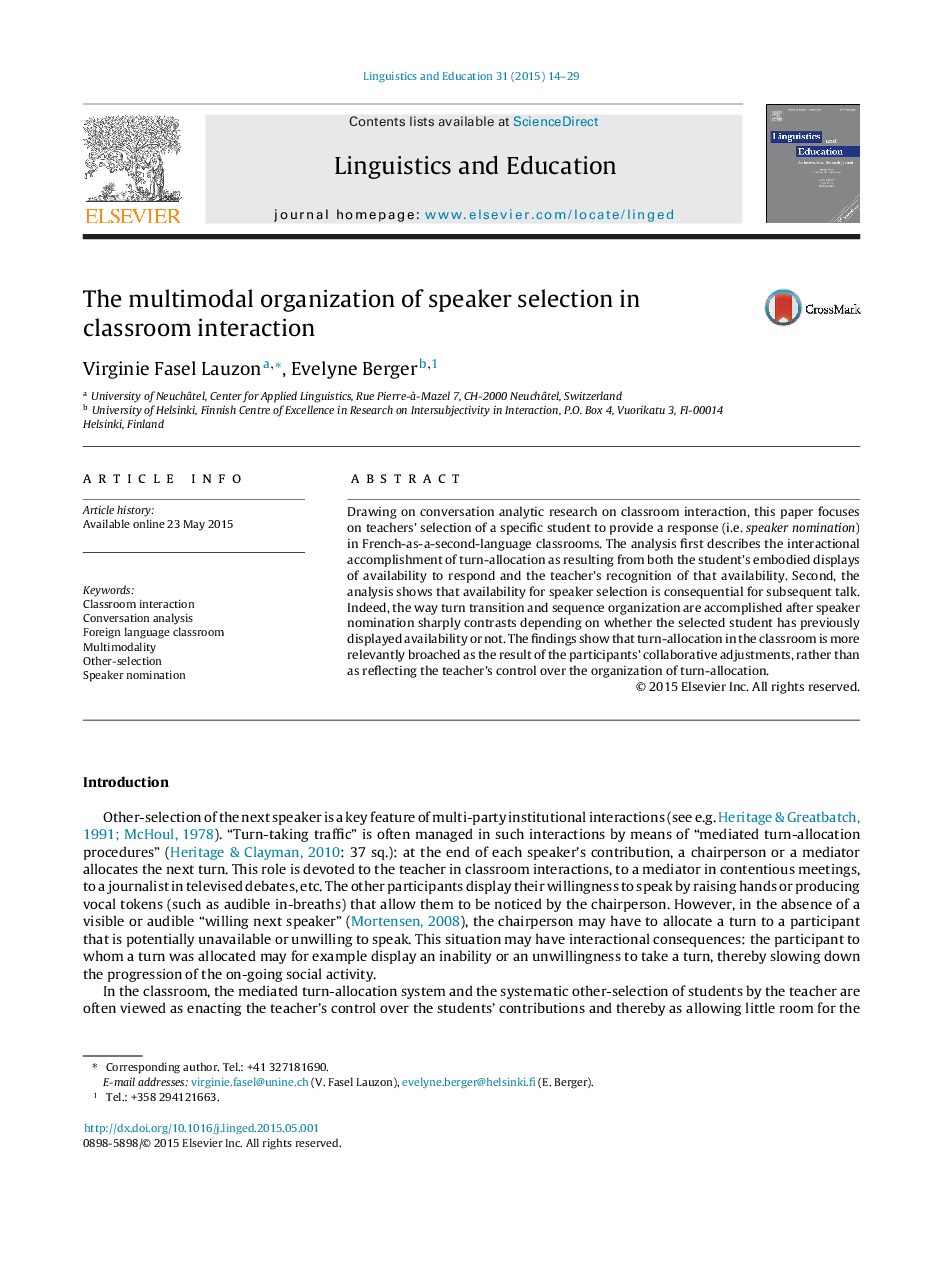| کد مقاله | کد نشریه | سال انتشار | مقاله انگلیسی | نسخه تمام متن |
|---|---|---|---|---|
| 366091 | 621347 | 2015 | 16 صفحه PDF | دانلود رایگان |
• Students display their (non-)availability prior to the teacher's turn-allocation.
• Teachers orient to students’ displays of (non-)availability when selecting the next speaker.
• (Non-)availability is consequential for turn transition and sequence organization.
• Students display compliance or resistance subsequently to their nomination.
Drawing on conversation analytic research on classroom interaction, this paper focuses on teachers’ selection of a specific student to provide a response (i.e. speaker nomination) in French-as-a-second-language classrooms. The analysis first describes the interactional accomplishment of turn-allocation as resulting from both the student's embodied displays of availability to respond and the teacher's recognition of that availability. Second, the analysis shows that availability for speaker selection is consequential for subsequent talk. Indeed, the way turn transition and sequence organization are accomplished after speaker nomination sharply contrasts depending on whether the selected student has previously displayed availability or not. The findings show that turn-allocation in the classroom is more relevantly broached as the result of the participants’ collaborative adjustments, rather than as reflecting the teacher's control over the organization of turn-allocation.
Journal: Linguistics and Education - Volume 31, September 2015, Pages 14–29
